Staff Feature – ERM Project Management Team
August 9, 2022
Erosion Risk Management consists of three primary teams. You may be familiar with the Erosion Hazard Monitoring and Erosion Studies & Analyses teams from this 2021 staff feature.
But what happens to all the information collected and prepared by those teams? Introducing the ERM Project Management (PM) team, which focuses on tying up all the loose ends to ensure we’re able to safely proceed to construction.
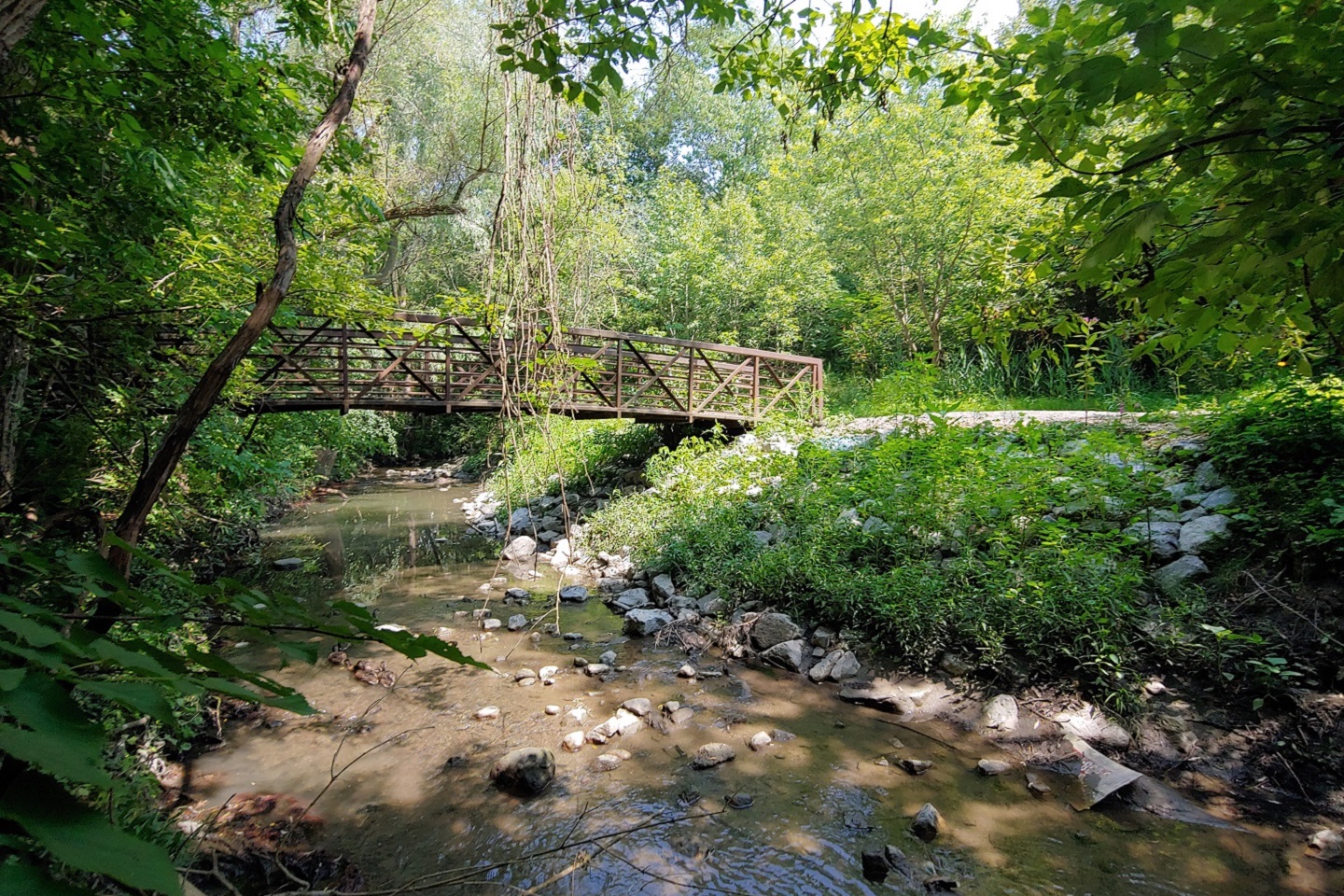
1. Ajax Bridge Restoration Project
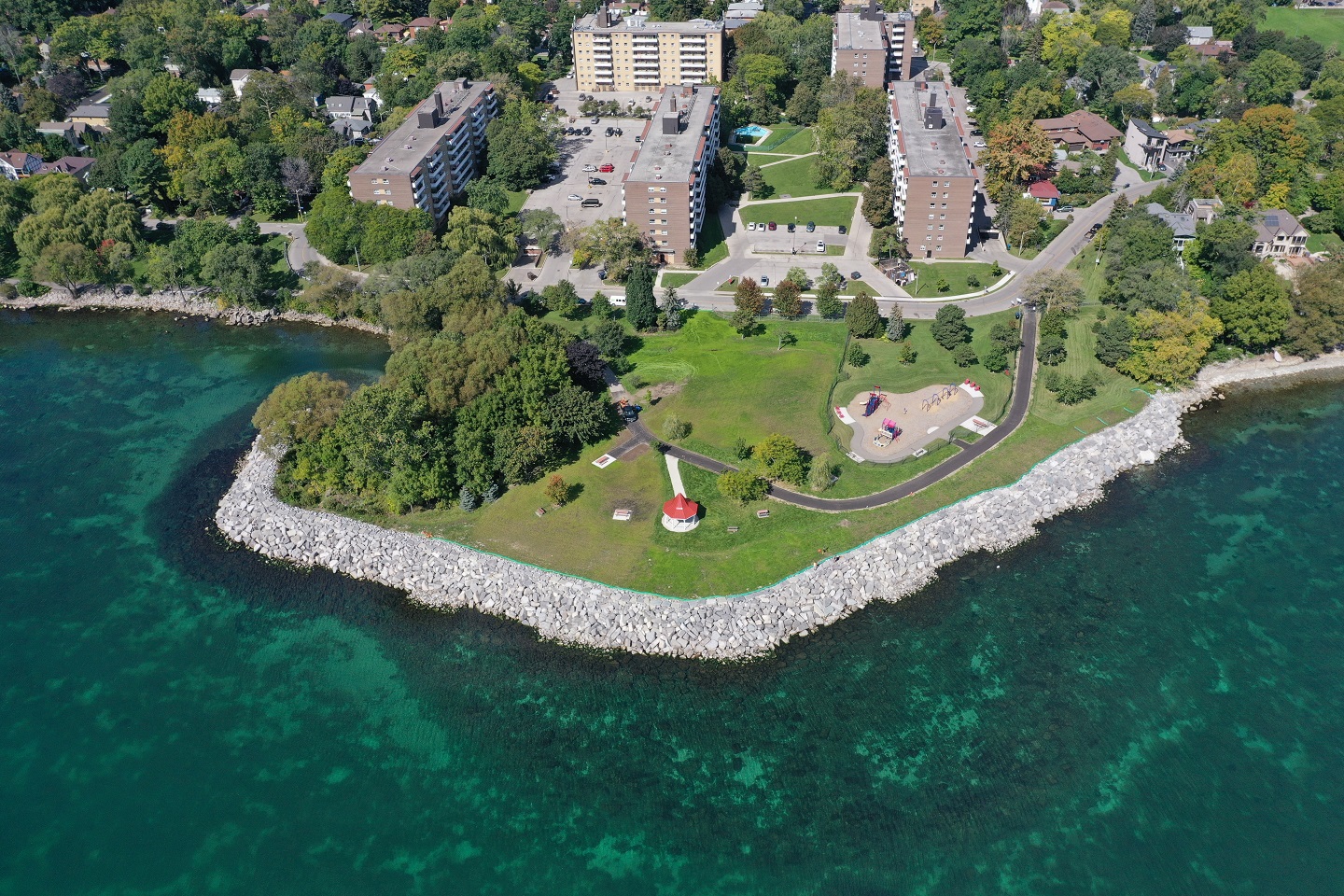
2. Long Branch Park Major Maintenance Project
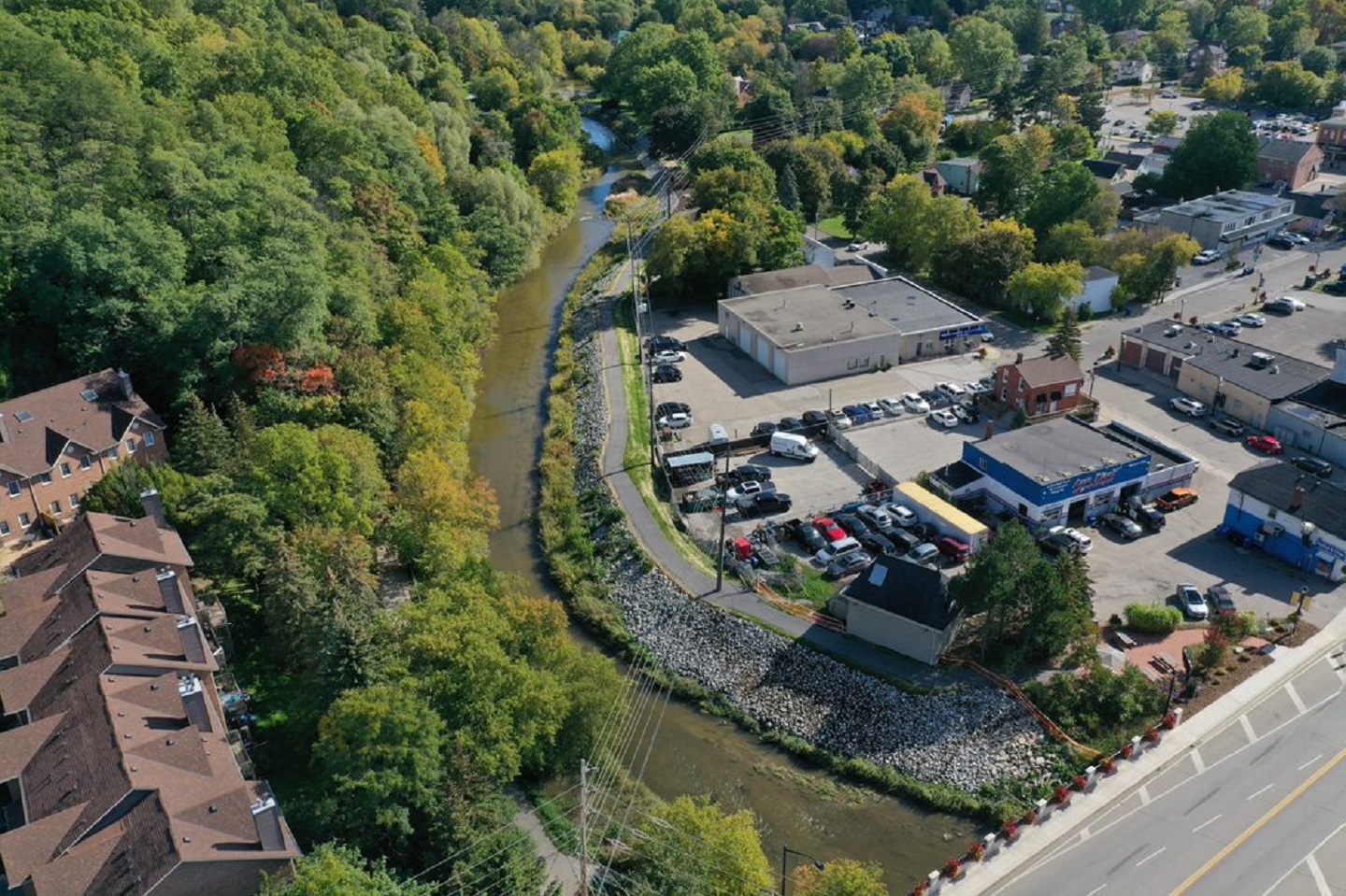
3. Bolton Sanitary Infrastructure Protection Project
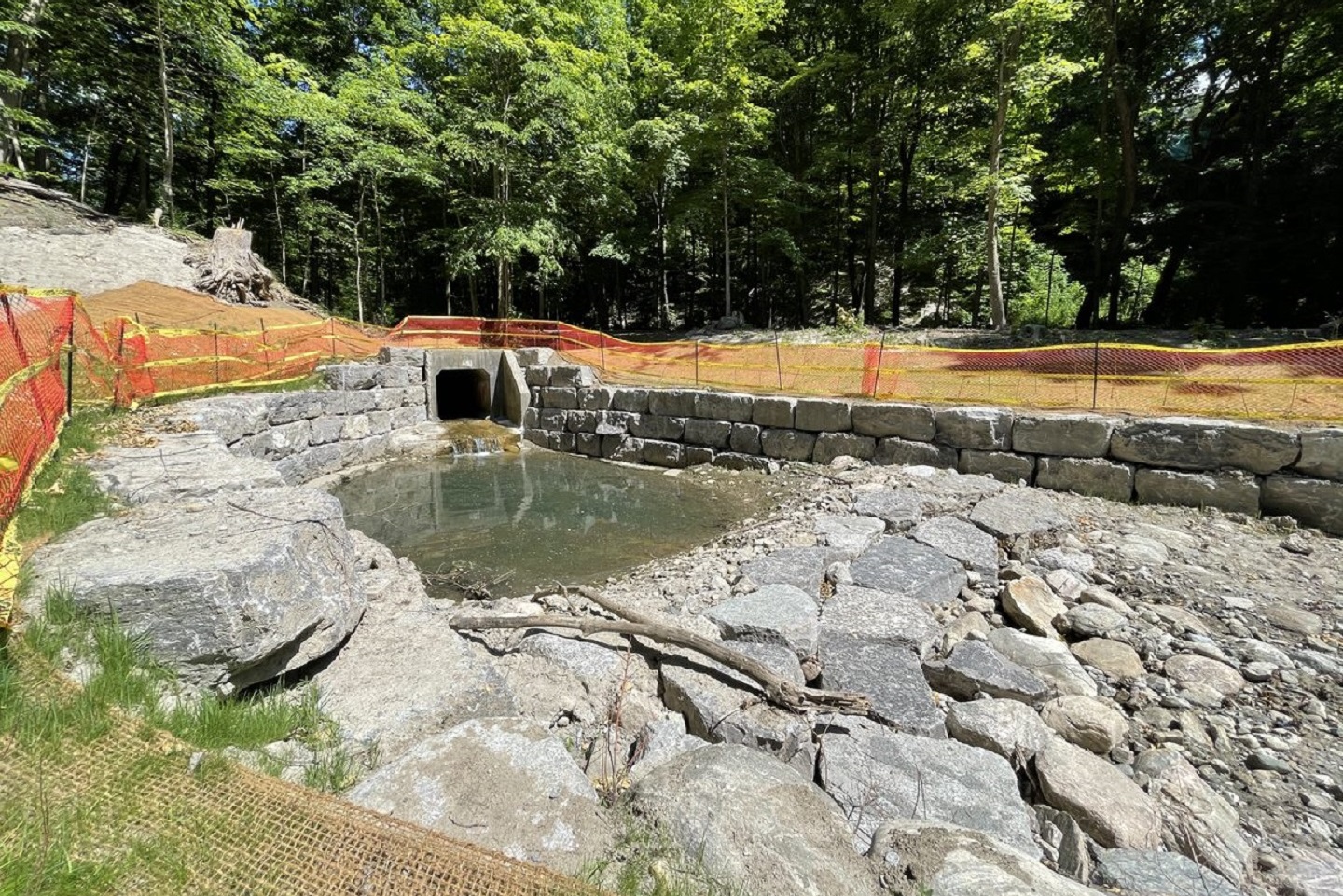
4. Mud Creek Restoration Project
The steps below outline how the PM team takes an erosion hazard or a failing erosion control structure and turns it into a hazard-free completed project.
Step One: Planning and Baseline Collection
Using their planning expertise, the PM team works through the logistics of the project, providing solid estimates for how much time, money and resources are required to get the job done.
Baseline Collection involves sifting through the repositories of existing information surrounding the project area and identifying potential schedule and budget risks and constraints.
Preliminary design concepts will also be considered in this step. Design concepts will determine what permits and approvals are necessary.
Step Two: Permits and Approvals
Many of the permits and approvals obtained by the PM team are necessary to protect such things as species at risk, sensitive lands/natural features, or infrastructure. The PM team works with internal TRCA staff, as well as municipal, provincial, federal partners to secure permits and approvals.
Many thanks to our colleagues in various TRCA Business Units for facilitating various permits and approvals: Archaeology, Aquatic Monitoring & Management, Soil Management, and Terrestrial Inventories & Monitoring, to name a few.
Step Three: Contract Administration
ERM projects often require the expertise of professional engineers or geoscientists to better understand the nature of the erosion hazard. ERM staff lead the contract management process for these initiatives, and the information is used to determine the long-term risk to infrastructure and property.
ERM staff use this information to determine if a project should be planned in the area, and the project then moves into developing detailed designs.
The PM team also manages and negotiates contracts with homeowners, where erosion control works will benefit private landowners. View the Private Landowner Contribution for Erosion Control Works Policy.
Step Four: Implementation
Implementation of ERM projects often occurs in partnership with internal Construction Services staff but can sometimes be contracted out. Regardless of who is constructing the project, the PM team is regularly on-site and always on-call to work with the construction teams to make sure projects are moving ahead smoothly.
Step Five: Post-Construction
After construction is complete, the PM team begins to close out the project. As-built survey drawings are coordinated and final budgets are reviewed. The erosion control structure information is sent to the Erosion Hazard Monitoring team, so that the work can be monitored for years to come.
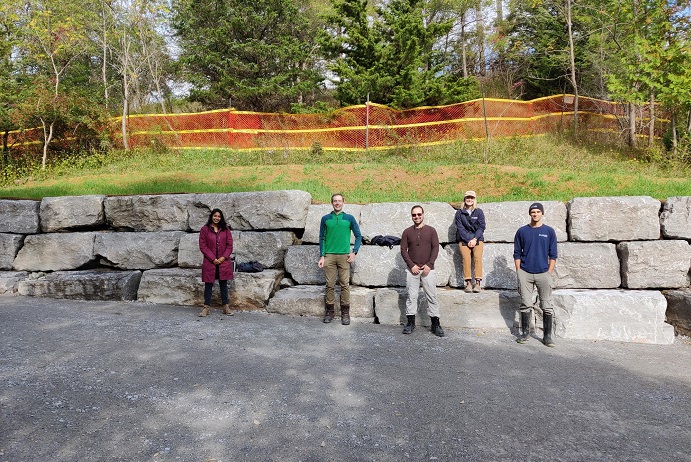
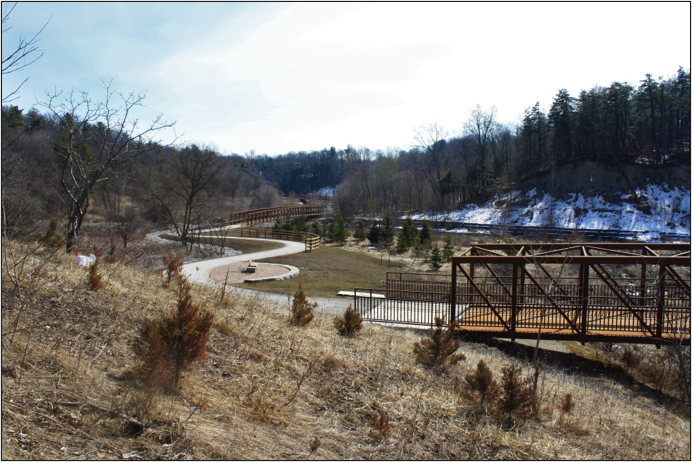
5-6. Staff on site at the Upper Highland Creek Pan Am Path Connection Project site
You can learn more about the capital programs and other work performed by ERM staff by reading the details below:
Toronto Ravine Major Maintenance
The Toronto Ravine Major Maintenance portfolio focuses on the maintenance and repair of TRCA’s permanent erosion control assets within the City of Toronto. These structures are found along valley corridors, ravines, and natural slopes.
Shout out to the team: Divya Sasi, Tony Lam and WonJai Jang, and Nivedha Sundararajah, Michael Van, and John Hunkin.
Toronto Waterfront Major Maintenance
The Toronto Waterfront Major Maintenance portfolio handles the repair and maintenance of TRCA’s network of permanent shoreline erosion control assets along the City of Toronto waterfront. These structures are found along the north shore of Lake Ontario and are designed to protect the shoreline, adjacent tableland, public amenities, and infrastructure from erosion.
Shout out to the team: Rebecca Salvatore, Jeffrey Glenen, Natasha Gibson, Whitney Brennan, Danielle Dellandrea, Cameron Sanderson, and Amanda Lazarevski.
Valley Erosion Hazards (City of Toronto)
The Valley Erosion Hazards portfolio addresses erosion hazards and slope instability issues impacting private and public property throughout the ravine systems in the City of Toronto.
The July 8, 2013 severe weather event was the catalyst for a funding increase to this portfolio that prompted TRCA to extend assistance to private properties where homes have been deemed at risk by erosion or slope instability. The goal of each project is to provide a cost-effective solution to protect essential infrastructure, such as residential dwellings and municipal assets.
Shout out to the team: Daniel Dyce, Robyn Cox, Rachel Caruana, Shaga Kokabi, Courtney Munro, Ryan Burns, and Kassidee Bambrough.
York Region Erosion Control & Infrastructure Protection
The York Region Portfolio is broken down into three sub-profiles. Shout out to the team: Phil Wolfraim, Amanda Stock, and Emily Williamson.
1. York Region Streambank Infrastructure Erosion Control Management Program: The York Region Streambank Infrastructure Erosion Control Management Program (SIECMP) provides long-term erosion hazard management for Environmental Services infrastructure assets along ravines and watercourses. The portfolio includes the monitoring, study, design, maintenance and implementation of erosion control works for infrastructure protection in TRCA’s jurisdiction of York Region.
2. TRCA Maintenance & Other Hazards (York Region): The TRCA Maintenance & Other Hazards (York Region) portfolio is established for maintaining TRCA’s existing permanent erosion control assets and developing new erosion control protection measures on TRCA lands within York Region. These assets are often found along ravine and valley corridors or along natural slopes. Same team as above.
3. Private Property Erosion Hazard Mitigation Business Case (York Region): The Private Property Erosion Hazard 2018-2024 Business Case (York Region) was proposed in 2018 to address a growing number of slope instability and erosion hazards that were placing private properties at risk in TRCA’s jurisdiction in the Regional Municipality of York; the business case is set to close in 2024. The goal of the business case is to provide a cost-effective solution to protect essential infrastructure, such as residential dwellings. Let’s hear it for the same team as above!
Region of Peel Erosion Control & Infrastructure Protection
The Region of Peel Erosion Control & Infrastructure Protection portfolio monitors the risk to TRCA owned erosion control structures, Region of Peel infrastructure hazard monitoring sites, and other erosion hazards impacting public and private land. This portfolio includes the monitoring, study, design, maintenance and implementation of erosion control works to remedy these hazards.
Shout out to the team: Rudra Bissoon, Sarnia Vijayakumar, and Peter Armstrong.
Fee-for-Service Projects
ERM also undertakes projects for TRCA’s regional and municipal partners on a fee-for-service basis to help address their priorities. These projects vary in scale and complexity. Typical fee-for-service projects focus on providing erosion protection for critical public infrastructure and are often located in natural or environmentally-sensitive areas.
Two examples of recent fee-for-service projects are: Upper Highland Creek Pan Am Path Connection Project (see Photos 5 and 6 above); and Toronto Island Park Flood and Erosion Mitigation Project (see Photo 8 below).
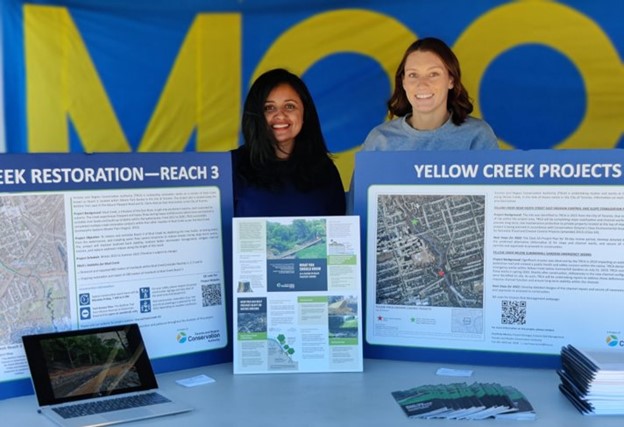
7. Project Management staff in action
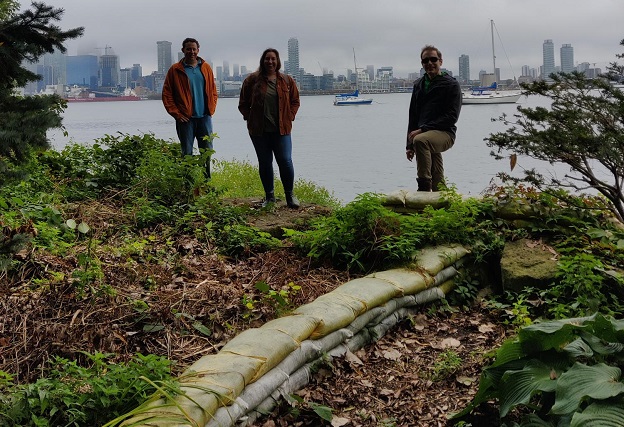
8. Project Management staff on site at the Toronto Island Park